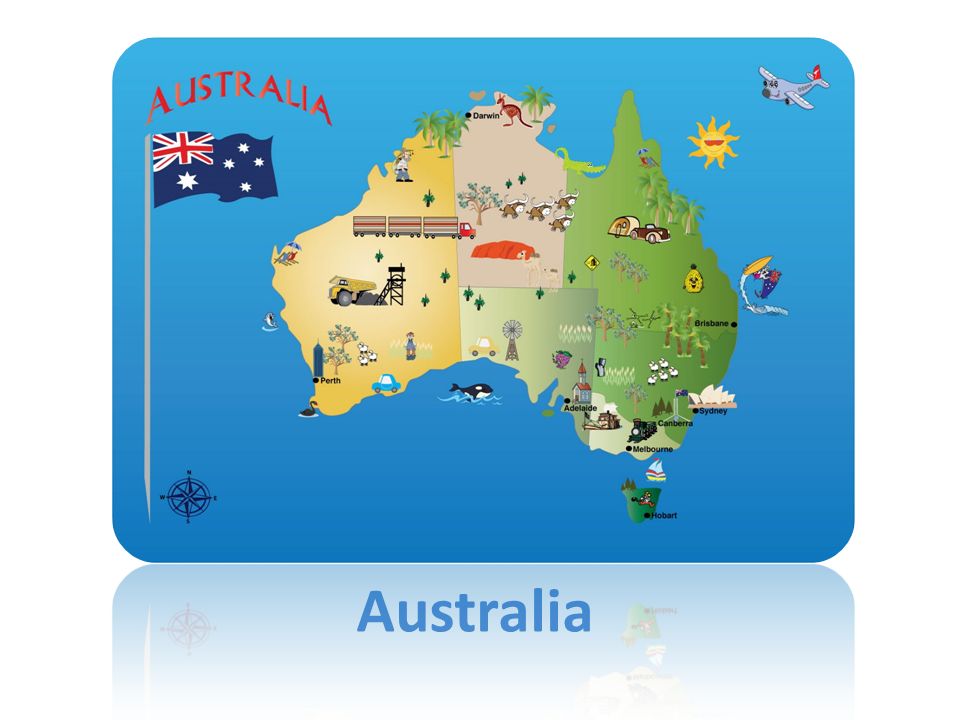Aussie Land Down Under: G’day, mates! Get ready to explore the vast expanse of Australia, a land like no other. With its impressive land size, Australia proudly claims its spot as the sixth largest country in the world. From stunning landscapes to unique wildlife, there’s so much to discover in this incredible nation.
Spanning across a whopping 7.7 million square kilometers, Australia’s land size is nothing short of impressive. Its vast territory encompasses various landscapes, including the iconic Outback, breathtaking coastlines, and ancient rainforests. With such diverse geography, it’s no wonder Australia holds a special place in global geography.
Exploring Australia’s continental territory unveils the uniqueness of this country. As the world’s only continental country, Australia boasts a distinct geography that sets it apart. From the captivating Great Barrier Reef to the expansive Simpson Desert, each region offers a different experience for adventurers seeking to uncover Australia’s natural wonders.
As you immerse yourself in the Aussie Land Down Under, prepare to encounter an extraordinary array of wildlife. Australia is home to some of the world’s most unique species, from cuddly koalas to playful kangaroos. With diverse ecosystems spanning the Southern Hemisphere and the Oceania continent, Australia’s natural wonders are simply awe-inspiring.
So, fellow explorers, are you ready to embark on a journey through Australia’s remarkable landscapes and encounter its fascinating wildlife? Stay tuned as we take you on an adventure through the Aussie Land Down Under.
Australia’s Impressive Land Size
When it comes to land size, Australia truly lives up to its reputation as the Aussie Land Down Under. With its vast expanse, it ranks sixth among the largest countries in the world. This immense landmass holds a significant place in global geography.
“Australia’s land size is a testament to the country’s magnificent natural landscapes and diverse ecosystems. It encompasses a wide range of geographical features, from the expansive Outback to the stunning coastal regions.”
The sheer magnitude of Australia’s land area is awe-inspiring. Let’s take a closer look at some key facts:
- Australia is the sixth largest country in the world by land area.
- It spans approximately 7.7 million square kilometers.
- From east to west, Australia stretches over 4,000 kilometers, and from north to south, it covers about 3,200 kilometers.
- The continent is surrounded by the Indian and Pacific Oceans, offering a coastline that spans over 36,000 kilometers.
This vast territory provides a wide range of habitats for Australia’s unique flora and fauna, making it a biodiversity hotspot. From the iconic kangaroos hopping across the plains to the breathtaking landscapes of the Great Barrier Reef, every corner of Australia has its own story to tell.
To truly appreciate the scale of Australia’s incredible land size, take a moment to visualize it:
| Comparison | Area (Square Kilometers) |
|---|---|
| Australia | 7,692,024 |
| Russia | 17,098,242 |
| Canada | 9,984,670 |
| China | 9,596,961 |
| United States | 9,525,067 |
As you can see, Australia’s land size is nothing short of extraordinary. Its vastness offers endless opportunities for exploration and adventure, whether you’re hiking through the rugged landscapes of the Australian Outback or snorkeling in the crystal-clear waters of the Whitsunday Islands.
Australia’s impressive land size is not only a source of national pride but also a magnet for travelers seeking to immerse themselves in the country’s natural wonders. Join us as we continue our journey through the mesmerizing Aussie Land Down Under.

Exploring Australia’s Continental Territory
When it comes to vast and diverse landscapes, Australia is in a league of its own. As a continental country, it boasts a unique geography that sets it apart from the rest of the world. Let’s delve into what makes Australia a continental country and explore its remarkable landscapes, ranging from arid deserts to lush rainforests.
Australia’s continental status stems from its sheer size and distinct landmass. Spanning an impressive area of approximately 7.6 million square kilometers, it is the world’s sixth-largest country by land area. This expansive territory is located entirely in the Southern Hemisphere, making it a prominent part of the Oceania continent.
One of the defining features of Australia’s geography is its diverse range of landscapes. The continent is home to the vast Australian Outback, characterized by sprawling deserts and red sand dunes that stretch for miles. The famous Uluru, also known as Ayers Rock, stands as a majestic natural wonder in this arid region.
Contrasting the aridity of the Outback, Australia is also blessed with lush rainforests. The Daintree Rainforest in Queensland, for example, is one of the oldest rainforests in the world and boasts an extraordinary biodiversity. It is home to unique flora and fauna, including the elusive cassowary and the beautiful fan palm.
Exploring Australia’s coastal regions reveals breathtaking landscapes. The iconic Great Barrier Reef, a UNESCO World Heritage Site, stretches over 2,300 kilometers and is the world’s largest coral reef system. Its vibrant marine life and stunning coral formations attract snorkelers and scuba divers from around the globe.
Australia’s geography also showcases majestic mountain ranges, including the Great Dividing Range, which spans across several states. This natural wonder not only offers breathtaking vistas but also serves as a home to various native wildlife species, such as the koala and the wombat.
Indeed, Australia’s continental territory is a treasure trove of natural wonders and diverse landscapes. From the expansive deserts to the lush rainforests and captivating coastal regions, the country’s geography is as vast and varied as its cultural heritage. It is no wonder that Australia continues to captivate adventurers and nature enthusiasts alike.
Natural Wonders of the Aussie Land Down Under
Discover the breathtaking natural wonders that await you in the Land of Kangaroos, located in the Southern Hemisphere within the Oceania continent. Australia, known for its vast and diverse landscapes, is home to a plethora of unique flora and fauna that thrive in its diverse ecosystems.
Embark on a mesmerizing journey through Australia’s extraordinary wilderness and witness the sheer beauty that Mother Nature has bestowed upon this remarkable country.
Iconic Kangaroos: A National Symbol
When picturing Australia, it’s impossible to ignore the image of kangaroos bounding across the rugged landscapes. These fascinating marsupials have become an iconic representation of Australia’s wildlife and are found abundantly throughout the country.
With their powerful hind legs and unique jumping abilities, kangaroos effortlessly traverse the vast expanses of the Australian outback. Observing these magnificent creatures in their natural habitat is an experience you won’t forget.
Diverse Ecosystems: From Rainforests to Arid Deserts
Australia’s Oceania continent boasts an incredible array of diverse ecosystems, each offering a glimpse into the country’s natural wonders. From the lush rainforests of Queensland’s Daintree National Park to the breathtaking Great Barrier Reef, Australia’s landscapes are as diverse as they are spectacular.
On one hand, you can explore the world’s oldest rainforests, alive with vibrant flora and teeming with diverse wildlife. On the other hand, the vast Australian deserts, such as the iconic Uluru-Kata Tjuta National Park, showcase the raw beauty of an arid landscape.
Unique Flora and Fauna
Australia’s geographical isolation has led to the evolution of numerous endemic species, making its flora and fauna truly one-of-a-kind. The country is home to remarkable creatures such as the elusive platypus, the enchanting koala, and the captivating kookaburra.
The unique variety of plant life in Australia is equally astonishing. The majestic eucalyptus trees, vibrant wildflowers, and the world’s largest flowering plant, the remarkable Queen Victoria’s water lily, are just a few examples of Australia’s botanical wonders.
Australia’s Natural Wonders
Place your cursor below this line. Fill in the table with relevant information, making it visually engaging and informative.
| Attraction | Location | Description |
|---|---|---|
| Great Barrier Reef | Queensland | World’s largest coral reef system, teeming with marine life |
| Uluru-Kata Tjuta National Park | Northern Territory | A sacred site for indigenous Australians, featuring the mesmerizing Uluru monolith |
| Daintree National Park | Queensland | Oldest surviving tropical rainforest, housing rare and endemic species |
| Blue Mountains National Park | New South Wales | Stunning eucalyptus forests, dramatic cliffs, and iconic rock formations |
| Kakadu National Park | Northern Territory | World Heritage site with ancient Aboriginal rock art and diverse ecosystems |
Australia: A Top Tourist Destination
When it comes to breathtaking landscapes, vibrant cities, and a rich cultural heritage, Australia has it all. It’s no wonder that Australia ranks as one of the top tourist destinations in the world. From iconic landmarks to stunning coastlines, this diverse country offers a truly unforgettable experience for travelers of all ages and interests.
Explore Vibrant Cities
Australia is home to some of the world’s most vibrant and cosmopolitan cities. Whether it’s the bustling streets of Sydney, the artistic vibe of Melbourne, or the laid-back charm of Brisbane, each city has its unique character waiting to be explored. Enjoy world-class dining, shopping, and entertainment while immersing yourself in the lively Australian city life.
Discover Stunning Beaches
Australia boasts thousands of kilometers of pristine coastline, making it a paradise for beach lovers. From the famous Bondi Beach in Sydney to the breathtaking Whitehaven Beach in the Whitsundays, you’ll find an array of stunning beaches with crystal-clear waters and powdery white sand. Whether you’re looking to relax, surf, or snorkel, Australia’s beaches offer something for everyone.
Experience World-Renowned Landmarks
When it comes to landmarks, Australia has no shortage of iconic sites. One of the most recognizable is the Sydney Opera House, with its distinctive sail-like design and breathtaking harbor views. Another must-visit is the majestic Uluru-Kata Tjuta National Park, home to the famous Uluru (Ayers Rock). These landmarks not only showcase Australia’s unique beauty but also its rich cultural heritage.
Immerse Yourself in Rich Cultural Heritage
Australia’s Indigenous culture is one of the oldest living cultures in the world, and exploring it is an enriching experience. From visiting sacred sites to learning about Dreamtime stories, you can gain a deeper understanding of Australia’s rich cultural heritage. Additionally, Australia’s multicultural society offers a diverse range of culinary delights, festivals, and art scenes, adding even more vibrancy to the cultural tapestry.

Whether you’re drawn to natural wonders, vibrant cities, or cultural experiences, Australia has something for everyone. With its unique landscapes, friendly locals, and endless adventures, it’s no surprise that Australia remains a top tourist destination.
| Reasons to Visit Australia | Highlights |
|---|---|
| Stunning Beaches | Whitehaven Beach, Bondi Beach, Great Ocean Road |
| Iconic Landmarks | Sydney Opera House, Uluru, Great Barrier Reef |
| Diverse Wildlife | Kangaroos, Koalas, Great White Sharks |
| Vibrant Cities | Sydney, Melbourne, Brisbane |
| Cultural Experiences | Indigenous heritage, multicultural festivals |
Aussie Land Down Under: Exploring Australia’s Unique Wildlife
Experience the wonders of Australia’s extraordinary wildlife, found nowhere else on Earth. This magnificent continent is home to a diverse range of species, thanks to its vast and varied landscapes. From cuddly koalas and bounding kangaroos to mesmerizing marine life and vibrant bird species, Australia is a wildlife enthusiast’s dream come true.
Australia’s geographical isolation has allowed its wildlife to evolve in splendid isolation, resulting in unique and endemic species. The Great Barrier Reef, known as one of the Seven Natural Wonders of the World, is a haven for countless marine creatures. Snorkel alongside colorful fish, graceful stingrays, and majestic sea turtles in the crystal-clear waters of this UNESCO World Heritage Site.
But it’s not just the marine life that mesmerizes visitors. Australia’s vast outback is home to incredible creatures such as the thorny devil, bilby, and dingo. The rainforests of Queensland shelter mesmerizing creatures like the cassowary, with its vibrant plumage, and the ancient and elusive platypus. Few places in the world offer such a diverse and distinctive range of wildlife.
Australia’s commitment to conservation is evident in its numerous national parks, dedicated wildlife sanctuaries, and ongoing efforts to protect endangered species. Take part in a wildlife conservation project and contribute to the preservation of unique habitats and the welfare of iconic Australian animals. Immerse yourself in the wonder of Australia’s unique wildlife and leave with a renewed appreciation for the importance of protecting our natural world for future generations.
Frequently Asked Questions
Aussie Land Down Under: What is the land size of Australia?
Australia is ranked as the sixth largest country in the world in terms of land area.
Aussie Land Down Under: How would you describe Australia’s continental status?
Australia is considered a continental country due to its unique geography and vast territory.
Aussie Land Down Under: What are some natural wonders in Australia?
Australia, also known as the Land of Kangaroos, is located in the Oceania continent in the Southern Hemisphere. It is home to a variety of natural wonders, including diverse flora and fauna, picturesque landscapes, and breathtaking landmarks.
Aussie Land Down Under: Why is Australia a top tourist destination?
Australia’s vibrant cities, stunning beaches, world-renowned landmarks, and rich cultural heritage make it a popular choice for tourists from around the globe.
Find out more at: https://tinyurl.com/ma5tx7w4












